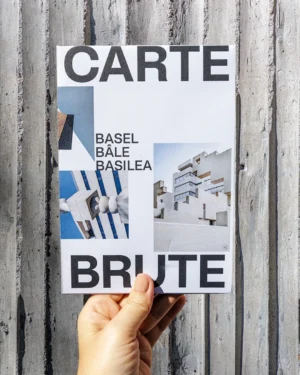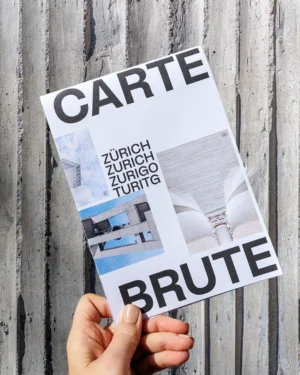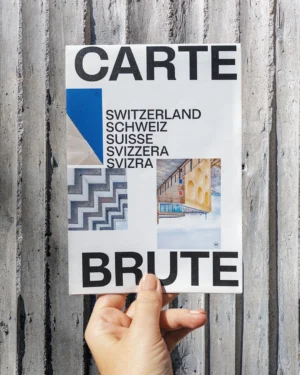Unteraffoltern II

Words & Photography: Karin Bürki

- Residential
- Georges-Pierre Dubois
- 1967-1970
- Frohnwaldstrasse 94, Im Isengrind 35, 8046 Zurich
- Zürich
- Award for Good Buildings, City of Zurich, 1972
- Listed in Carte Brute Zurich
Here’s an idea for an urban walk. It takes you from the busy Oerlikon district in the north of Zurich along quiet fields, past a farm, through a forest and ends in a carefully manicured park. Sit down at one of the wooden picnic tables, sink your lips into your sandwich and admire the breathtaking view of the two Le Corbusier-style Unteraffaltern II concrete tower blocks.
Don’t be triggered: yes, the two 40-metre-high and 63-metre-long brutalist structures are worth a visit. After all, in March 2023, they were voted the “ugliest buildings in Switzerland” in a community poll by the news portal 20 Minuten (Goetheanum came in a close second). “An unsightly concrete jungle” was one of the nicer verdicts.
Ouch! Yet when they were completed in 1970, these supposed ‘eyesores’ were considered extremely progressive, both architecturally and socially. Unteraffoltern II was the centrepiece of one of the city’s largest postwar developments. In the 1960s, Zurich was in desperate need of new and affordable housing. In 1966, construction began on five housing estates for 5,000 people in Affoltern, which was still very rural at the time. Unteraffoltern II alone accounted for a third of the more than 700 new flats.
The brutalist architecture reflected the optimistic, concrete-loving spirit of the boom years. The Unité d’habitation in Marseille by the Franco-Swiss architect Le Corbusier from 1952 served as a blueprint. Its trademarks: exposed concrete, stacked and vertically nested duplexes, communal areas and integrated shops. The Unités were supposed to be surrounded by a well-maintained green space. Zurich’s answer was designed by someone who knew his job: Georges-Pierre Dubois had worked in Le Corbusier’s Paris office in the 1930s and built the first Swiss Unité in Arbon in canton of Thurgau, in 1960.
If you haven’t already ditched them, now is the time to put your prejudices to bed. For behind the (to today’s eyes) repulsive façade lies a good core. The Dubois-Unité offers an ingenious flat structure, light-flooded duplexes and spacious communal areas. The ultimate highlight, however, are undoubtedly the entrance halls. They feature a lush mini botanical garden with a water element. The mailboxes come in bright yellow, green, blue and orange. The whole thing is so inviting even the picnic table makes sense.
In the late 1990s, the two towers underwent a major refurbishment. The facades got a refresh and a wheelchair ramp was added to the entrance halls. Changing housing needs and a desire for a more diverse tenant mix led to a third of the 264 flats being combined into larger units in 2002-2003. Each building now comprises 118 flats, ranging from 1 to 5 1⁄2 bedrooms and accommodating up to 250 people.
Those who still see monsters: Lake Katzensee is on the other side of the motorway.
Machines for living in - a Swiss invention
Georges-Pierre Dubois: the architect who brought ‘machines for living in’ architecture to Switzerland
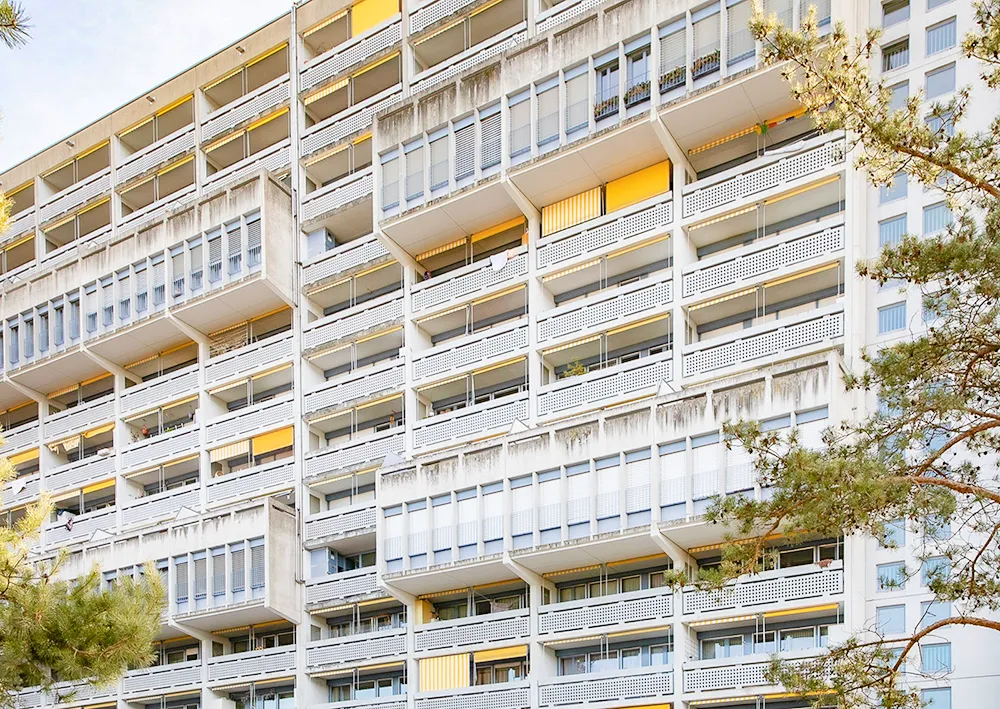
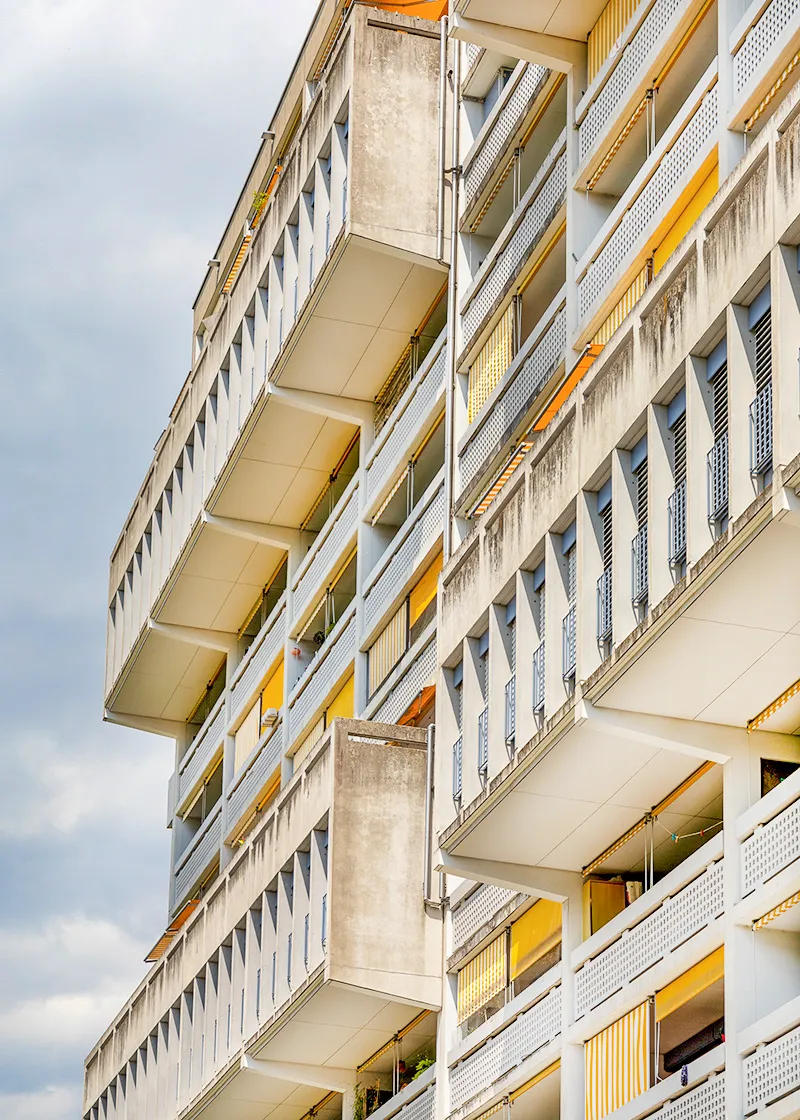

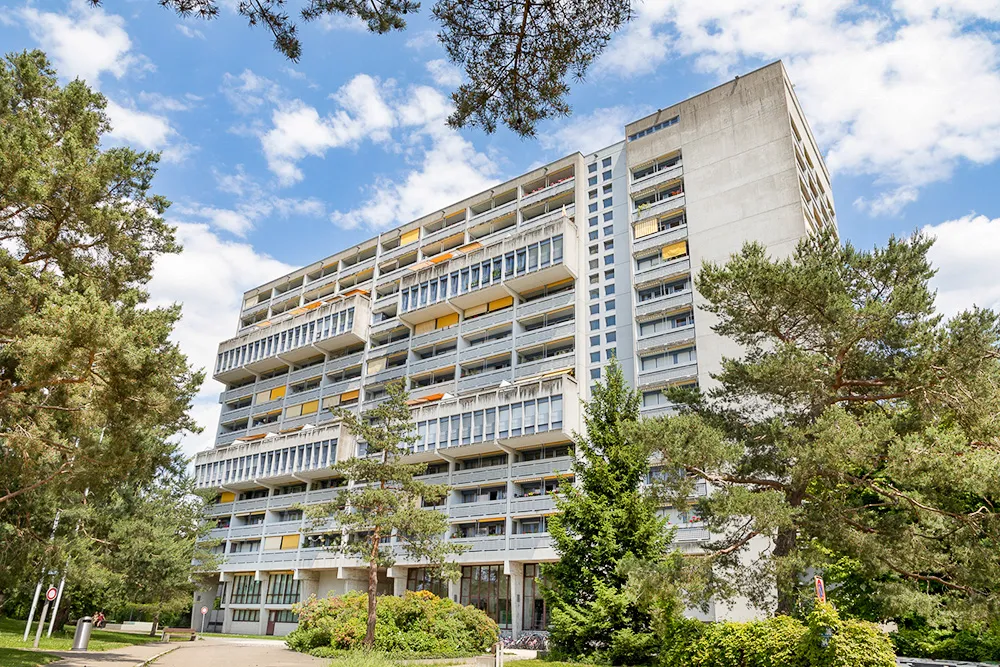
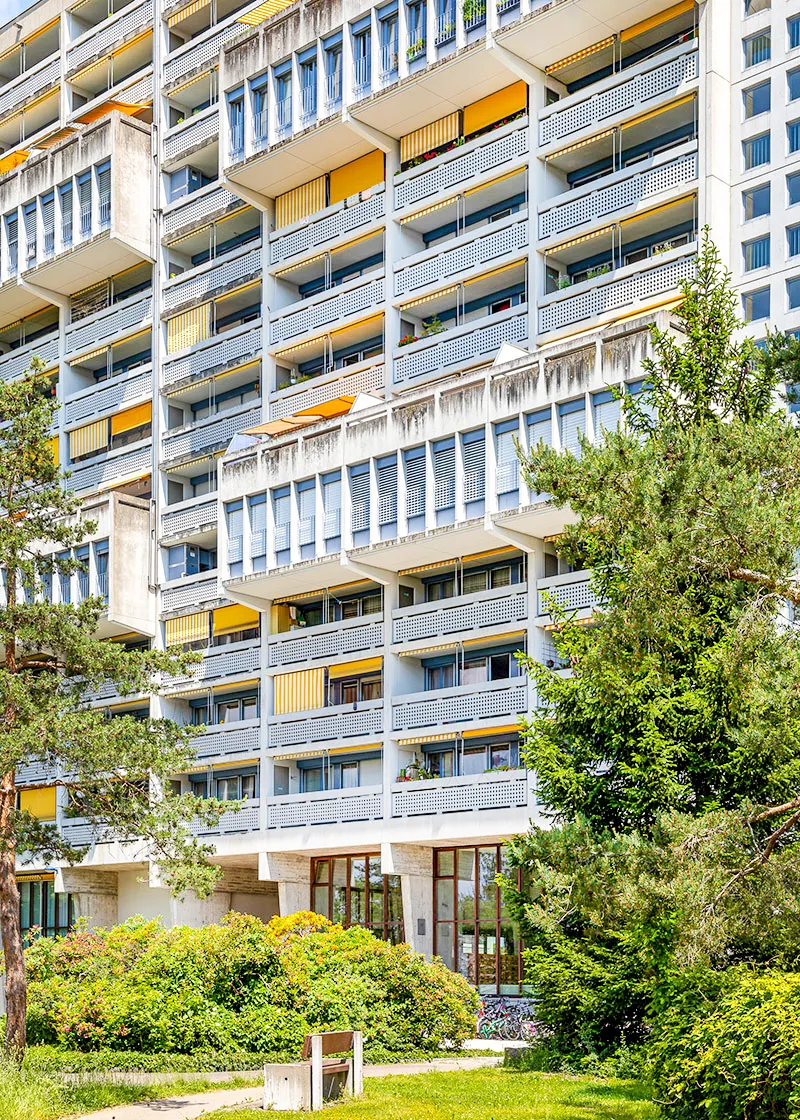
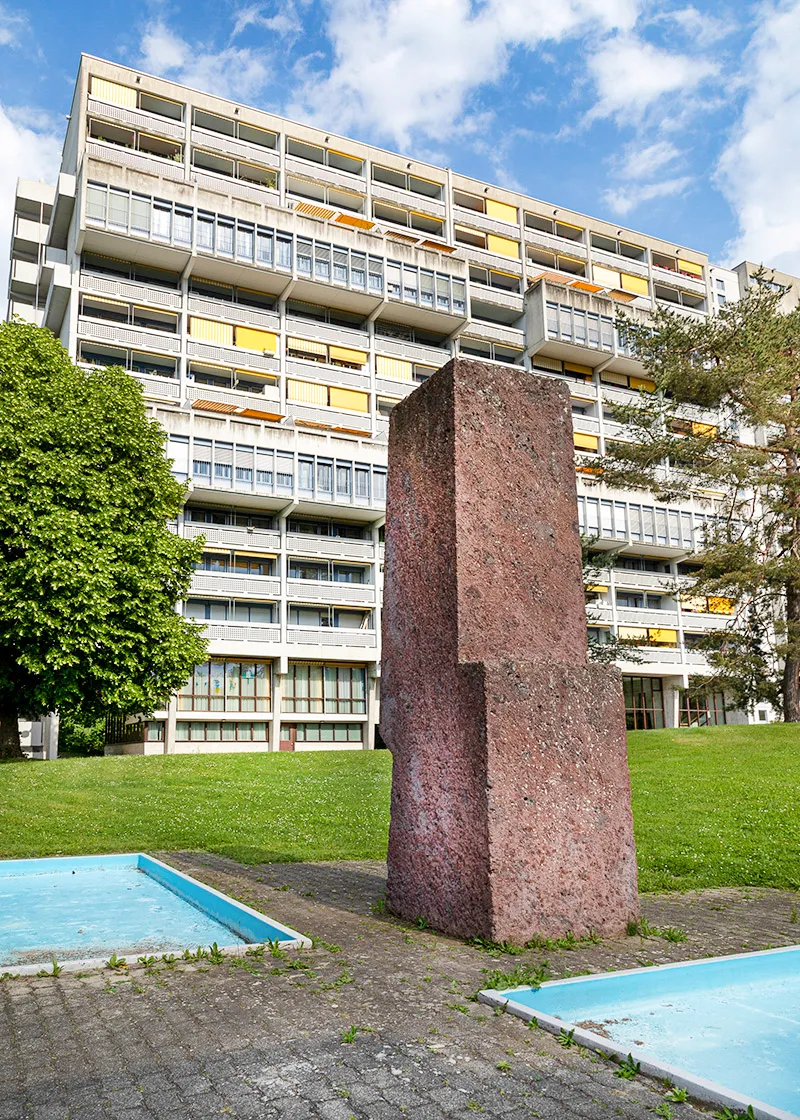
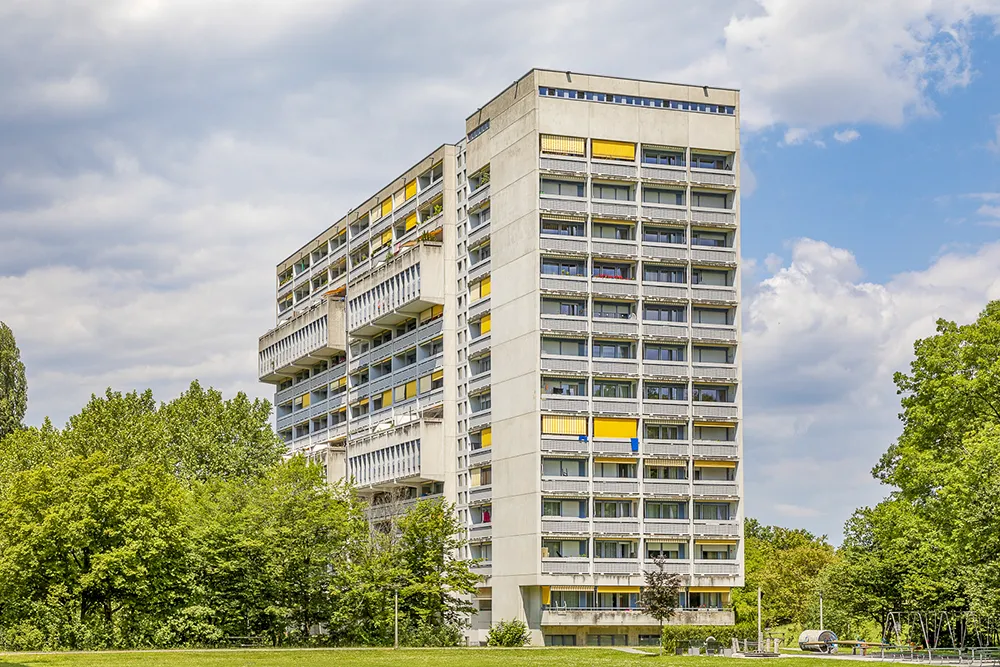
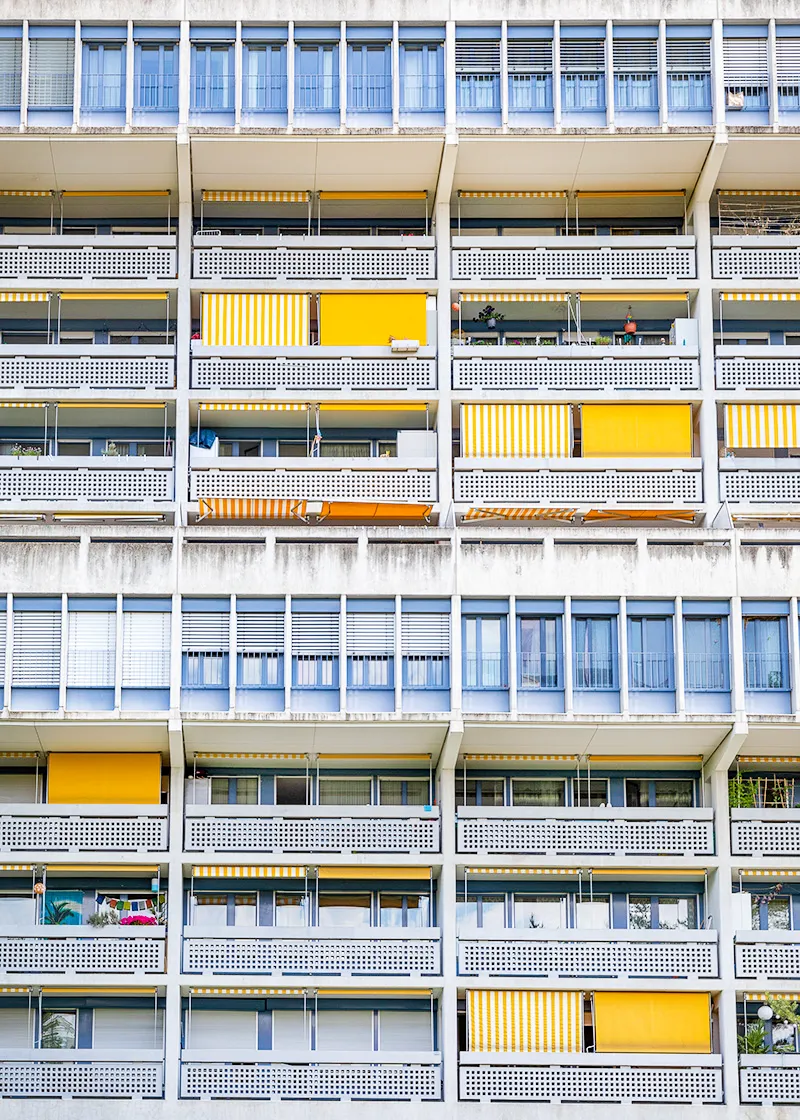

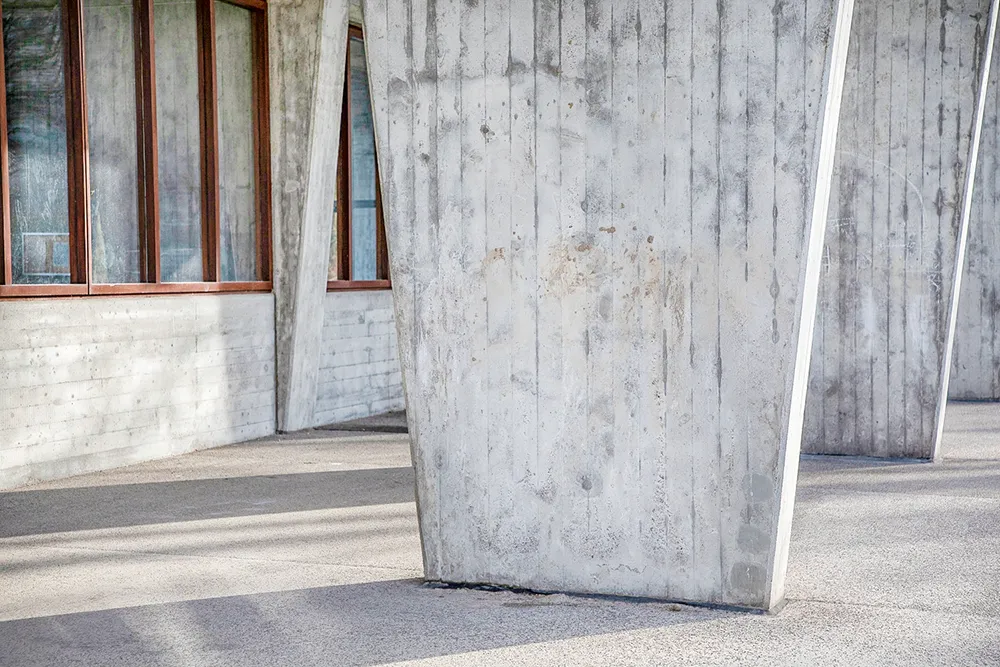
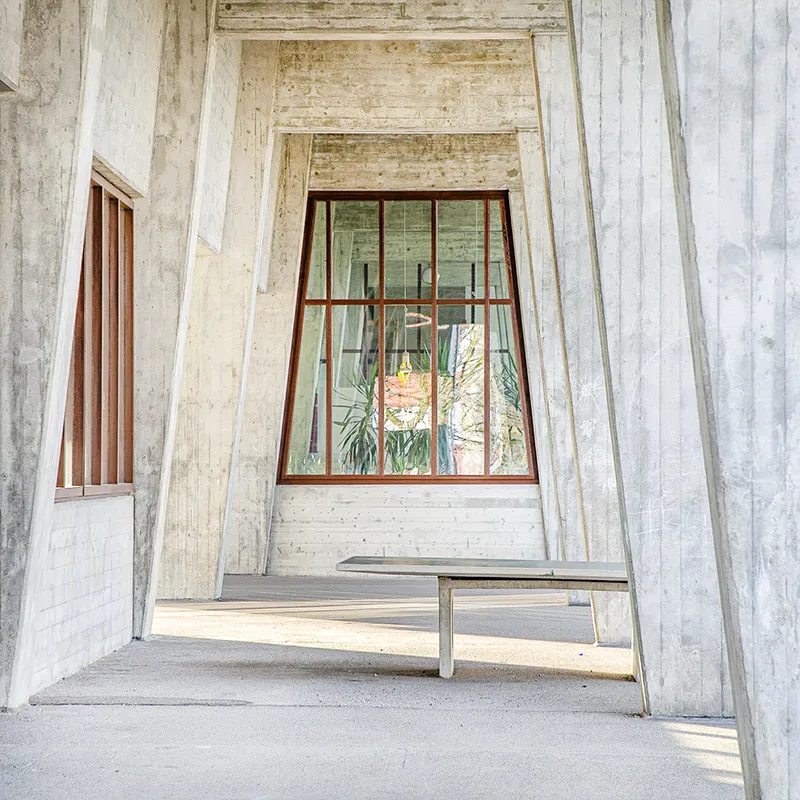
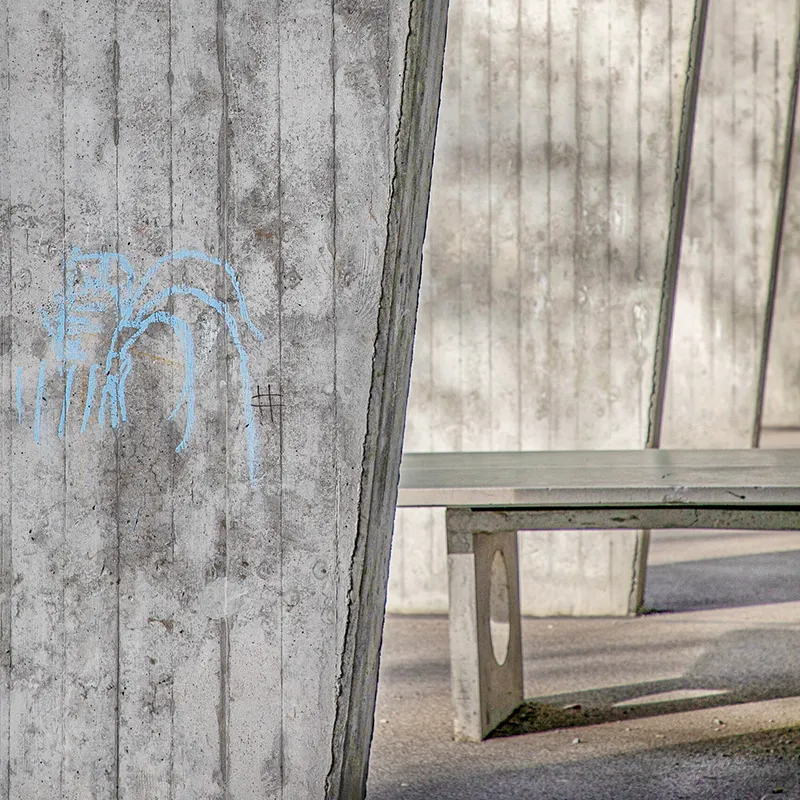
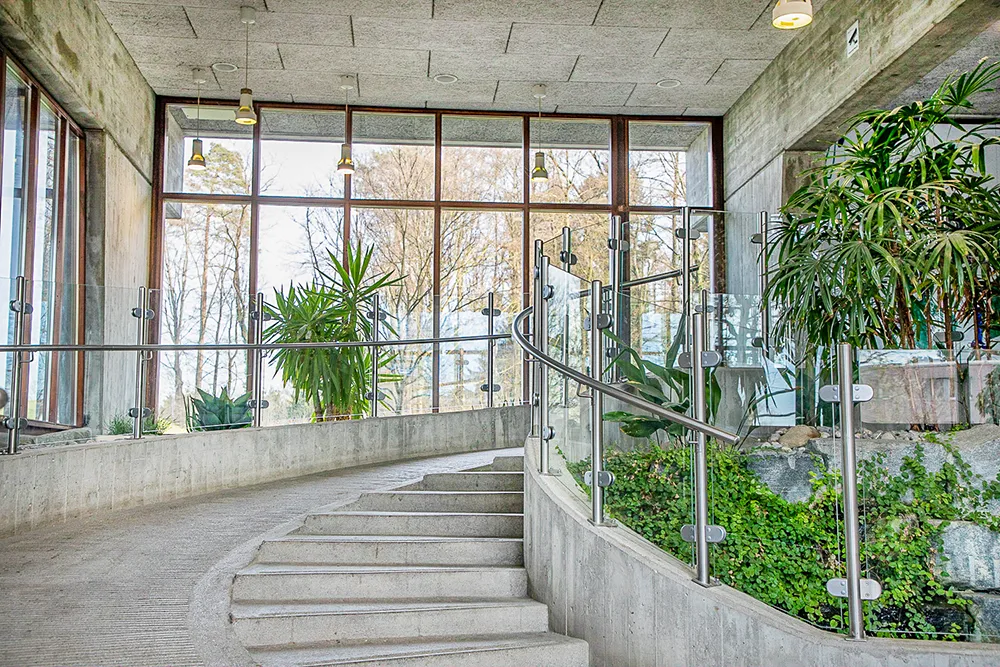

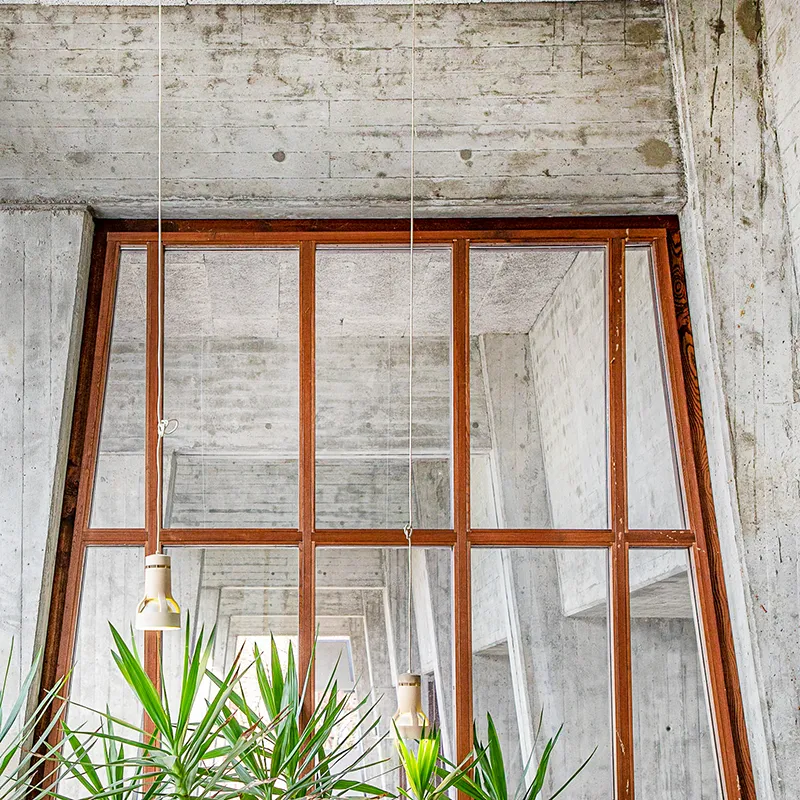
© Karin Bürki/HEARTBRUT
© Karin Bürki/Heartbrut

